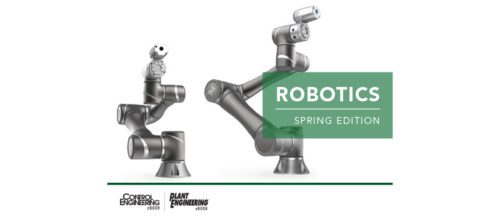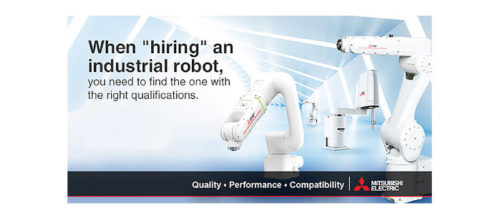Five uses for industrial robots in aerospace applications
Industrial robots are being used to assist in the aerospace industry with welding, material removal, and transport applications to improve safety and efficiency.
The aerospace industry faces unique challenges. In terms of robotic automation, one unique challenge is while aircraft are typically in use for decades, but the technology used to create them develops at a rapid pace. The need for ever-increasing productivity and streamlined operations places a great deal of responsibility on robotic automation to consistently deliver a competitive advantage.
Robotic technology in the aerospace industry has evolved quickly, and today’s aerospace robots are delivering entirely new levels of productivity for these five applications:
- Material removal: Robots equipped with advanced sensors for path planning and analysis, mounted on a mobile track, are now being used for sanding and paint removal applications. These robots are a major source of productivity. The Air Force, for example, spends upwards of 40,000+ hours on these tasks—robotic material removal drastically reduces the time and cost of these applications.
- Non-destructive inspection: The aerospace industry is known for tight tolerances and strict regulations, as there is no room for failure in the manufacturing process. Robotic non-destructive ultrasonic testing and inspection improves the accuracy of inspections while increasing productivity in a heavily manual process.
- Welding: There’s been a widespread need for some time for the welding of metal parts in motors and turbines, but most recently robots have been welding exotic materials. For metals like Titanium or Nickel-Alloy, today’s robots can provide quality and safety above and beyond manual processes.
- Assembly: Robots with versatile end-effectors are now being used to automate the assembly process, including tasks such as drilling, countersinking, applying sealants and setting rivets. Much of this work is laborious and demanding for human workers—robots are faster and more accurate at these tasks.
- Transport: Some forms of mobile robots are now used in the aerospace industry to move large structures weighing several tons around the manufacturing facility. Many of these mobile robots are quite large themselves, featuring dozens of specialized wheels, and can move autonomously.
The constant rate of innovation in robotics for aerospace manufacturing has led to some new and exciting robotic applications. As the industry continues to strive for higher levels of productivity, robotic technology will also continue to be a source of innovation.
This article originally appeared on the Robotics Online Blog. Robotic Industries Association (RIA) is a part of the Association for Advancing Automation (A3), a CFE Media content partner. Edited by Chris Vavra, production editor, Control Engineering, CFE Media, cvavra@cfemedia.com.
Original content can be found at www.robotics.org.
Do you have experience and expertise with the topics mentioned in this content? You should consider contributing to our CFE Media editorial team and getting the recognition you and your company deserve. Click here to start this process.



